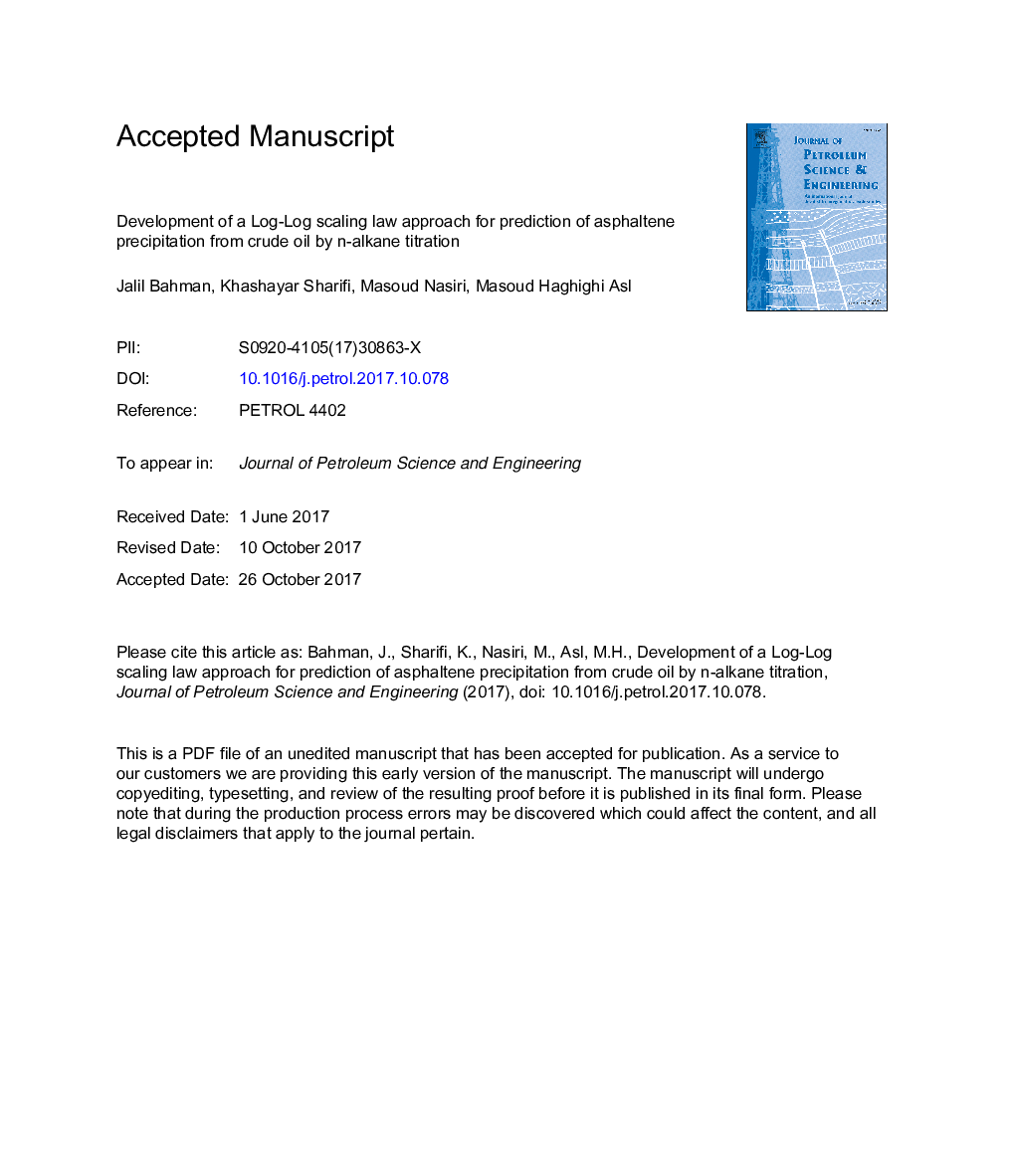| Article ID | Journal | Published Year | Pages | File Type |
|---|---|---|---|---|
| 8125552 | Journal of Petroleum Science and Engineering | 2018 | 29 Pages |
Abstract
One of the most significant problems that petroleum and gas industries tend to know much more is the behavior and the weight percent of Asphaltene precipitation in crude oils. A large number of researchers have been scrutinizing to develop new models for estimating Asphaltene precipitation. Of available approaches, scaling law which is not only relatively simple but also faster than other conventional mathematical methods is promising. In this study, the potential of Ashoori's scaling equation was firstly examined in detail. Afterwards, to solve its drawbacks, an alternative model was formulated exploiting the logarithm operator. Indeed, in this communication, the authors tried to drive a polynomial model that can estimate the amount of Asphaltene precipitation at all dilution ratio ranges with higher accuracy. To get proper outputs and to compare its results with Ashoori's and Rassamdana's outcomes, the polynomial function was fitted to experimental data points. The R2 (R-squared) of the present model, namely Log-Log scaling law, was about 0.999, and the results indicate that the Log-Log scaling law has better performance than that determined by others for prediction of Asphaltene precipitation from crude oil by n-alkane titration.
Related Topics
Physical Sciences and Engineering
Earth and Planetary Sciences
Economic Geology
Authors
Jalil Bahman, Khashayar Sharifi, Masoud Nasiri, Masoud Haghighi Asl,
